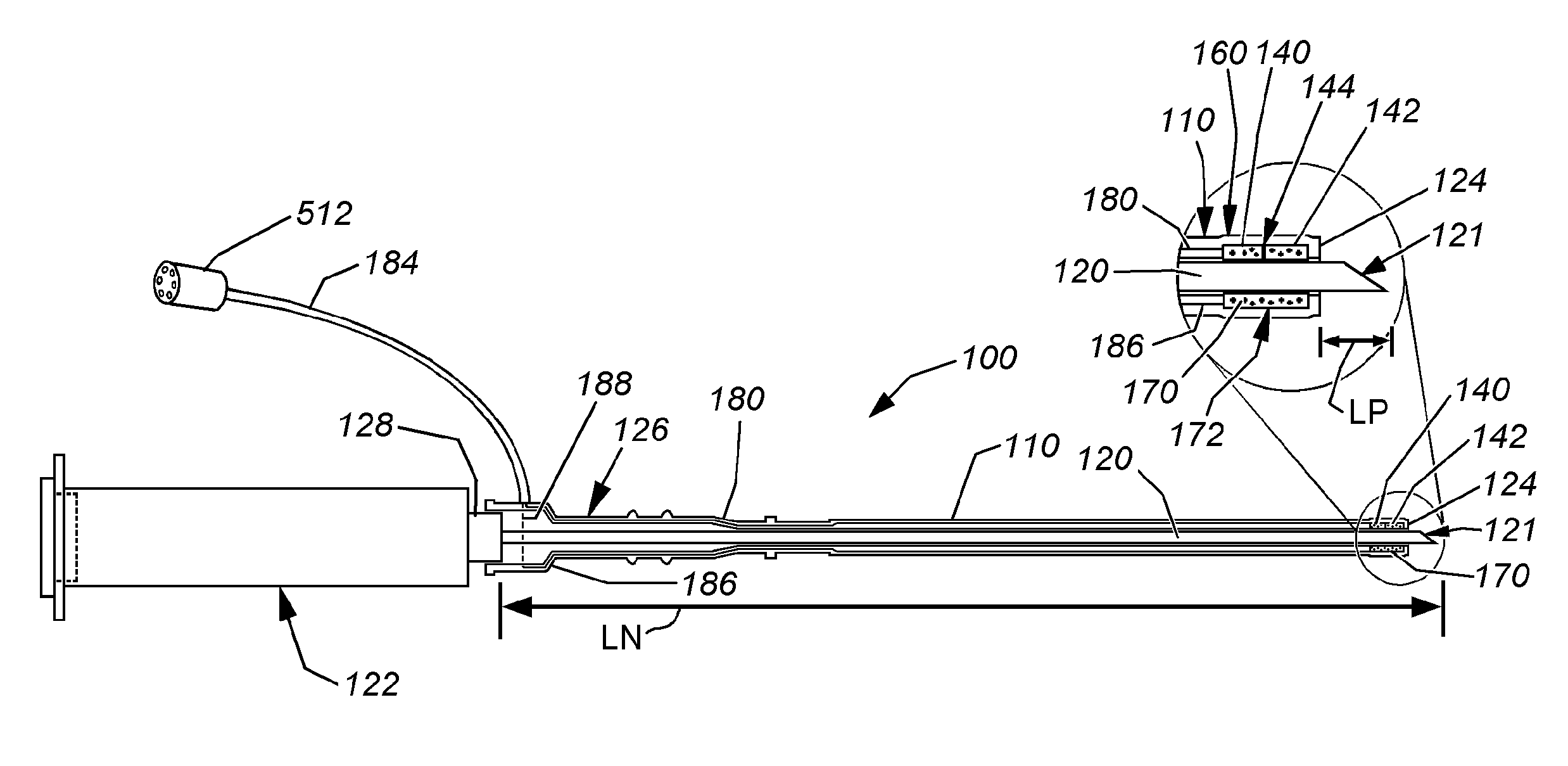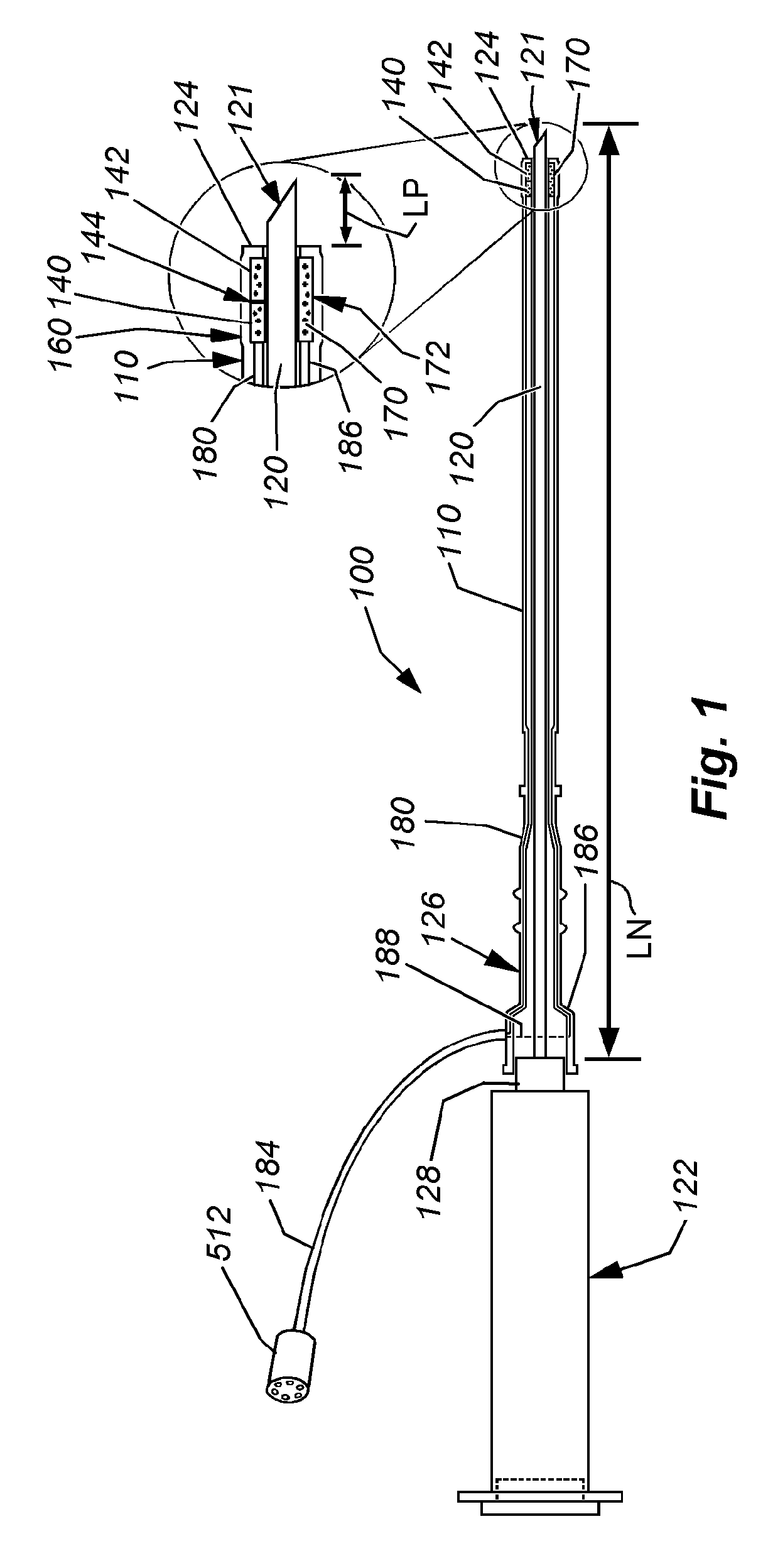System and method for venous oximetry using a catheter
- Summary
- Abstract
- Description
- Claims
- Application Information
AI Technical Summary
Benefits of technology
Problems solved by technology
Method used
Image
Examples
Embodiment Construction
A. Oxygenation of Hemoglobin and Principles of Oximetry
[0025]The vast majority of oxygen in blood is carried on the hemoglobin molecule with minimal amounts dissolved in the plasma. Due to the unique characteristics of hemoglobin, arterial blood and venous blood generally carry substantially differing amounts of oxygen. For example, in a healthy body arterial blood oxygenated hemoglobin (oxyhemoglobin) is between 96-100% of the total hemoglobin concentration. Conversely, venous blood (deoxyhemoglobin) typically reads a maximum saturation in the 80 percent range. In an unhealthy body, venous blood may read in the 60 percent range. Thus, there is a clear delineation between concentrations of oxygenated hemoglobin in venous versus arterial blood.
[0026]The measurement of blood oxygen levels though use of oximetry is well-known. One such device is the pulse oximeter, which non-invasively detects the subject's blood-oxygen level. The pulse oximeter operates on the principle of the Beer-La...
PUM
 Login to View More
Login to View More Abstract
Description
Claims
Application Information
 Login to View More
Login to View More - R&D
- Intellectual Property
- Life Sciences
- Materials
- Tech Scout
- Unparalleled Data Quality
- Higher Quality Content
- 60% Fewer Hallucinations
Browse by: Latest US Patents, China's latest patents, Technical Efficacy Thesaurus, Application Domain, Technology Topic, Popular Technical Reports.
© 2025 PatSnap. All rights reserved.Legal|Privacy policy|Modern Slavery Act Transparency Statement|Sitemap|About US| Contact US: help@patsnap.com



